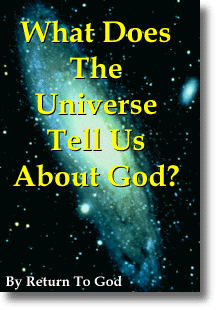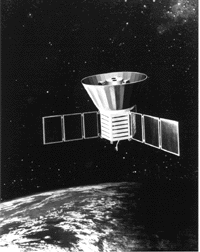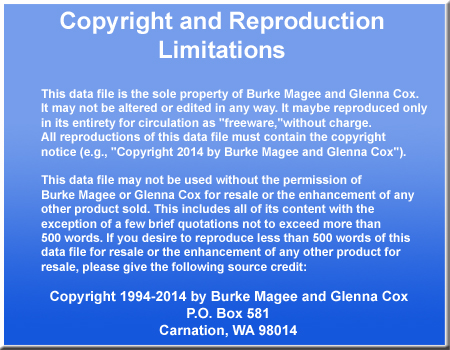 Scientific
discoveries prove that the universe was created at a specific instant of time. What are
these discoveries and how do they prove that God created the universe? How is the design
of the universe a testament to God?
Scientific
discoveries prove that the universe was created at a specific instant of time. What are
these discoveries and how do they prove that God created the universe? How is the design
of the universe a testament to God? Scientific
discoveries prove that the universe was created at a specific instant of time. What are
these discoveries and how do they prove that God created the universe? How is the design
of the universe a testament to God?
Scientific
discoveries prove that the universe was created at a specific instant of time. What are
these discoveries and how do they prove that God created the universe? How is the design
of the universe a testament to God?
| Now more than any other
time in history we have an abundance of scientific evidence regarding the creation of the
universe and the way it works. This evidence, though surprising to some scientists, is
very consistent with the concept of God as the Creator. Let's look at how recent
discoveries and the design of the universe are testaments to God's creative power. Discoveries Prove Creation Event Occurred "It is the discovery of the century, if not of all time." -- Stephen Hawking, Cambridge University |
"What we have found is evidence for the birth of the universe...It's like looking at God" -- George Smoot, University of California at Berkeley. [The idea that God created the universe is] "a more respectable hypothesis today than at any time in the last hundred years." -- Frederic B. Burnham, science historian. The scientists were referring to a discovery on April 24, 1992 by an American research team from data obtained through the COBE (Cosmic Background Explorer) Satellite. This discovery substantiated the "big bang" theory of the creation of the universe. The "big bang" theory states that "the entire physical universe -- all the matter and energy, and even the four dimensions of space and time -- burst forth from a state of infinite, or near infinite, density, temperature and pressure. The universe expanded from a volume very much smaller than the period at the end of this sentence, and it continues to expand." 1 |
Discoveries prior to COBE had shown that the universe was expanding, as would be expected after an explosive creation event. Earlier COBE missions had shown that the universe must have had an extremely hot beginning 15 to 20 billion years ago because the background radiation temperature is now very low and smooth. But scientists expected to find slight variations in the background radiation. These variations would explain how galaxies "clumped" while background radiation remained smooth. The April 1992 COBE measurements and subsequently released data showed exactly the kind of slight variations in background radiation that scientists expected to find. Scientists now know that the universe was created by a single hot explosive creation event. |
Einstein Believed in a Creator |
As a result of Hubble's findings, Einstein acknowledged "the necessity for a beginning"5 and "the presence of a superior reasoning power"3. He did not accept, however, that the "superior reasoning power" was the God of the Bible. |
Einstein was Jewish but
had been educated at a Catholic school. When rabbis and priests came to congratulate him
on his discovery of God, he replied that he was convinced that the God that brought the
universe into existence was intelligent and creative, but he denied that God was personal.
He couldn't get beyond the paradox of God's omnipotence and man's responsibility for his
choices: "If this being is omnipotent, then every occurrence, including every human action, every human thought, and every human feeling and aspiration is also His work; how is it possible to think of holding men responsible for their deeds and thoughts before such an almighty Being? In giving out punishment and rewards He would to a certain extent be passing judgment on Himself. How can this be combined with the goodness and righteousness ascribed to Him?6" |
Unfortunately, none of the
rabbis or priests could provide him a satisfactory answer, rather they said that God had
not yet revealed the answer and that he should blindly trust Him. Einstein could not accept that answer and did not pursue the idea of a personal God any further. He held to the idea of an intelligent Creator but never accepted the idea of a personal God. For an answer to Einstein's question about the paradox of God's omnipotence and man's responsibility for his choices, see the article in this issue, "Beyond the Created Dimensions". |
 Creation Event Implies a Creator How does a single hot, explosive creation event prove the existence of God? Many belief systems that deny the existence of God have resisted the idea of a "big bang" creation event, instead favoring hypotheses such as the Steady State model, which claims the universe has always existed or the Oscillating Universe model, which claims the universe expands and contracts, essentially recreating itself, without requiring an ultimate beginning. The proof of a creation event, or beginning of the universe shakes the foundations of non Judeo-Christian belief systems -- for there to be a beginning, there must be a Beginner, outside of our universe. |
The argument for the
existence of God follows.2
Therefore, the universe must have a cause of its existence. Einstein, who initially discovered that the universe was expanding and decelerating (which pointed to a "big bang" creation event) came to accept the idea of a beginner, or "superior reasoning power"3, but did not accept the idea of a personal God, such as the God of the Bible (see "Einstein Believed in a Creator"). The physical properties of the universe are also a testament to a Designer. When we examine the universe, we see not a random conglomeration, but a very carefully crafted design. |
Physical Evidence Substantiates an Intelligent Creator Most of us take for granted the environment in which we live and the scientific properties that make our life here possible. For example, we may think that the stars we see are beautiful, or perhaps may have planets of their own where perhaps there may be other life, but few of us realize that the approximately hundred-billion-trillion stars must be there for life to be possible on earth. The stars comprise the mass density of the universe, which determines how efficiently nuclear fusion operates. If the mass density was too great, the stars (for example our sun) would have burned too quickly and not steadily enough to support a planet with life. If the mass density was too small, the heavier elements necessary for life would have never formed. Supernova eruptions which regularly occur in our universe are necessary to produce elements such as iron and calcium which are essential for life. |
Key Properties of the Universe Must Fall Within Narrow values to Support Life
|
|---|
Table 1. Basic building blocks for life depend on a very delicate, finely-tuned balance of the physical properties of the universe. This table lists twenty five properties of the universe which values must fall within very narrow ranges in order for life to exist.
Values of Some Key Properties of the Universe Required to Support Life
|
Table2. The delicate balance of the values of the properties of the universe required for life is evidenced by this sample of key values and the results of varying the values any direction
Physical Evidence Substantiates an Intelligent Creator Most of us take for granted the environment in which we live and the scientific properties that make our life here possible. For example, we may think that the stars we see are beautiful, or perhaps may have planets of their own where perhaps there may be other life, but few of us realize that the approximately hundred-billion-trillion stars must be there for life to be possible on earth. The stars comprise the mass density of the universe, which determines how efficiently nuclear fusion operates. If the mass density was too great, the stars (for example our sun) would have burned too quickly and not steadily enough to support a planet with life. If the mass density was too small, the heavier elements necessary for life would have never formed. Supernova eruptions which regularly occur in our universe are necessary to produce elements such as iron and calcium which are essential for life. |
Indeed, the basic building
blocks for life depend on a very delicate, finely-tuned balance of the physical properties
of our universe. Table 1 lists the twenty five characteristics that researchers have
uncovered that must fall within narrow ranges for life to exist. Table 2 describes some of
these characteristics in more detail. Earth - Uniquely Able to Support Life It is interesting to speculate about the possibility of life on other planets in other galaxies, however scientists have calculated the probability of life existing elsewhere in the universe at much less than one chance in a quintillion4. The earth is very uniquely suited to support life. It resides in a spiral galaxy that has the right rate of supernova events to provide sufficient heavy elements essential to life, without life-destroying radiation. Our sun is the right distance away from other stars in our galaxy to prevent gravitational interactions that would disrupt orbits of the planets, yet still have an even distribution of the heavy elements necessary for life. |
Our sun has the very
specific mass that is necessary to maintain a temperature suitable for life on earth. The
distance between the sun and the earth is correct to maintain the earth's current rotation
rate and to maintain the correct temperature to sustain life. Planets closer to the sun,
such as Venus or Mercury have rotation periods of months which create wide temperature
differentials incompatible with life. The distance between the sun and earth is also what
it must be to support the stability of liquid water, which is necessary for life to exist.
If the distance between the sun and earth changed as little as 2%, all life would cease to
exist. The moon also is as it must be to support life on earth. It is unique in our solar system in that it is large relative to its planet. It's resulting gravitational pull stabilizes the tilt of the earth and also helps the sea waters be cleansed and their nutrients replenished through the tidal cycle. We have described just a few of many parameters of the earth, moon, sun and galaxy that must fall within very narrowly defined ranges for life to exist. Table 3 lists some of the parameters that must be just as they are to have life on earth. |
Physical Properties of Earth and Solar System Necessary to Support Life
|
|---|
Table 3. Some of the parameters that must be just as they are to have life on earth.
What Does This Tell Us About God? The Designer of our universe created everything we know out of nothing (a volume much smaller than the period at the end of this sentence). "By faith we understand that the universe was formed at God's command, so that what is seen was not made out of what was visible." -- Hebrews 11:3. God must exist outside the four dimensions in which we live: length, width, height and time, for Him to have called them into being (see "Beyond the Created Dimensions" in this issue). He is an eternal, transcendent Creator. Scripture speaks of his existence before the beginning of time: "This grace was given us in Christ Jesus before the beginning of time" -- 2 Timothy 1:9; "...you loved me before the creation of the world." -- John 17:24; "In the beginning God created the heavens and the earth -- Genesis 1:1. |
The design of the
universe, the galaxy, the solar system and our planet are just as they must be to support
life on earth. This design speaks of God's omnipotence, His skill as a Creator and His
wisdom. The intricacies of design, the interrelationships, interdependence, function and
beauty of His design are awesome. His design also speaks clearly of how much He cares for
us. When we consider that a hundred-billion-trillion stars are necessary to support human
life, we can begin to understand the amount of care God took to construct the universe
just so it can support life on our planet. "When I consider your heavens, the work
of your fingers, the moon and the stars, which you have set in place, what is man that you
are mindful of him, the son of man that you care for him?" -- Psalm 8:3-4. The universe speaks very clearly indeed about our Creator, Who is eternal, wise, powerful, omnipotent, and most assuredly, cares very much about us. |
References Primary references for this article and good books for further study include The Creator and the Cosmos by Hugh Ross (Colorado Springs, CO.: Navpress, 1993) and The Fingerprint of God by Hugh Ross (Orange, CA: Promise Publishing Co.,1991). 1 Ross, Hugh, The Creator and the Cosmos. (Colorado Springs, CO.: Navpress, 1993), p. 20. 2 Craig, William Lane. The Kalam Cosmological Argument. (London, U.K.: Macmillan Press, 1979), pp. 63-153. 3 Barnett, Lincoln. The Universe and Dr. Einstein. (New York: William Sloane Associates, 1948), p. 106. 4 Ross, Hugh, The Creator and the Cosmos. (Colorado Springs, CO.: Navpress, 1993), p. 134. 5 Douglas, A. Vibert, "Forty Minutes with Einstein," Journal of the Royal Astronomical Society of Canada 50 (1956), p. 106. 6 Einstein, Albert. Out of My Later Years. (New York: Philosophical Library, 1950) pp. 27-28. |
Back
to http://www.ReturnToGod.com
